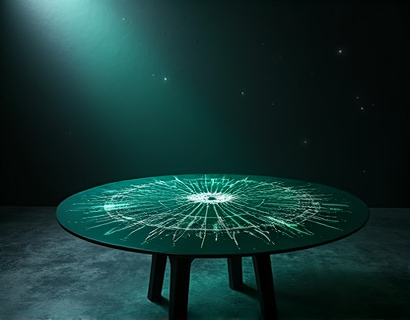Exploring the Ancient Indus Valley Civilization: Heritage and Exclusive Artifacts
The Indus Valley Civilization, one of the oldest and most enigmatic cultures in human history, flourished around 3300 to 1300 BCE in the northwestern regions of South Asia. This civilization, known for its advanced urban planning, sophisticated water management systems, and unique artistic expressions, continues to captivate historians, archaeologists, and enthusiasts alike. This article delves into the rich heritage of the Indus Valley Civilization, exploring its significant contributions to human history and highlighting exclusive artifacts that offer a glimpse into the daily lives and beliefs of its people.
The Indus Valley Civilization is named after the Indus River, which played a crucial role in the development and sustenance of this ancient culture. The civilization was spread across a vast area, encompassing parts of present-day Pakistan, India, and Afghanistan. Two of the most prominent urban centers of this civilization were Harappa and Mohenjo-Daro, though numerous other settlements have been discovered over the years. These cities were remarkable for their well-planned streets, advanced drainage systems, and standardized weights and measures, indicating a high level of social organization and technological sophistication.
One of the most intriguing aspects of the Indus Valley Civilization is its script, which remains undeciphered despite extensive research. The script appears in various forms, including seals, pottery, and tablets, and consists of over 400 distinct signs. This writing system, along with the lack of any known bilingual texts, has made it challenging for scholars to fully understand the language and culture of the Indus people. However, the presence of these scripts on various artifacts provides valuable insights into the administrative, religious, and commercial aspects of the civilization.
Artifacts from the Indus Valley Civilization offer a window into the daily lives and beliefs of its people. One of the most iconic items is the terracotta figurines, which depict a variety of subjects, including animals, humans, and deities. These figurines, often found in domestic contexts, suggest a rich tradition of art and possibly religious practices. The famous "Dancing Girl" figurine, discovered at Mohenjo-Daro, is a prime example of the artistic skill and attention to detail of Indus artisans. This small bronze statue, dating back to around 2500 BCE, showcases a young woman in a dynamic pose, highlighting the civilization's appreciation for beauty and movement.
Another significant artifact is the seal carvings, which were likely used for trade and administrative purposes. These seals feature intricate designs and often depict animals such as bulls, elephants, and unicorns, as well as abstract symbols. The standardization of these seals across different sites suggests a well-organized bureaucracy and a strong sense of identity among the Indus people. The use of seals also indicates a complex system of trade and commerce, as they would have been essential for verifying the authenticity of goods and transactions.
The Indus Valley Civilization is renowned for its urban planning and architecture. The cities were built with baked bricks, and the streets were laid out in a grid pattern, a feature uncommon in contemporary civilizations. The Great Bath at Mohenjo-Daro is a testament to the civilization's advanced engineering skills. This large, well-constructed bath, surrounded by steps and possibly used for ritual purification, demonstrates the importance of cleanliness and religious practices in Indus society. The presence of numerous wells and drainage systems in the cities further underscores the civilization's focus on public health and hygiene.
Water management was a critical aspect of Indus urban life. The civilization developed sophisticated systems to collect, store, and distribute water. Reservoirs and cisterns were built to capture and store rainwater, ensuring a steady supply during dry periods. The use of clay pipes for drainage and sewage removal was another innovative feature, helping to maintain the cleanliness of the cities. These systems not only facilitated daily life but also contributed to the overall sustainability of the urban centers.
Religious beliefs and practices of the Indus Valley Civilization are inferred from various artifacts and architectural features. The presence of numerous small altars and fire altars in homes suggests that domestic worship played a significant role in Indus religion. The "Pashupati" seal, discovered at Mohenjo-Daro, features a seated figure surrounded by animals, which some scholars interpret as a form of Shiva, indicating a possible early form of Hinduism. However, the lack of clear religious texts makes it difficult to draw definitive conclusions about the specific beliefs and rituals of the Indus people.
Art and craftsmanship were highly valued in the Indus Valley Civilization. The civilization produced a wide range of artifacts, from intricate jewelry to sophisticated pottery. Bead making was a prominent craft, with beads made from materials such as steatite, carnelian, and lapis lazuli. These beads were often drilled and polished to a high shine, indicating advanced tool-making skills. The use of these beads in jewelry and possibly as currency highlights the civilization's appreciation for aesthetics and trade.
Pottery from the Indus Valley Civilization is another area of fascination for scholars and enthusiasts. The pottery is known for its fine craftsmanship and variety of forms, including storage jars, cooking pots, and decorative vessels. Some pottery features intricate designs and motifs, suggesting a rich tradition of decorative arts. The standardization of pottery sizes and shapes across different sites indicates a well-organized production system, possibly linked to trade and commerce.
The decline of the Indus Valley Civilization remains a subject of debate among historians and archaeologists. Various theories have been proposed, including climate change, environmental degradation, and invasions by nomadic tribes. The most widely accepted theory suggests a combination of these factors, leading to the gradual abandonment of major urban centers and the dispersal of the population. Despite its eventual decline, the Indus Valley Civilization left a lasting legacy, influencing subsequent cultures in the region and continuing to inspire research and fascination today.
For those eager to delve deeper into the Indus Valley Civilization, numerous resources are available. Academic journals, books, and documentaries provide comprehensive overviews and detailed analyses of the civilization's various aspects. Museums around the world, such as the National Museum in New Delhi and the Pakistan Museum of Natural History, house extensive collections of artifacts from Indus sites, offering visitors a tangible connection to this ancient culture. Online platforms and digital archives also offer valuable insights and high-quality images of artifacts, making the Indus Valley Civilization accessible to a global audience.
In conclusion, the Indus Valley Civilization stands as a testament to the ingenuity and sophistication of early human societies. Its advanced urban planning, intricate art, and innovative water management systems continue to awe and inspire. By exploring the exclusive artifacts and rich heritage of this civilization, enthusiasts and scholars can gain a deeper understanding of one of history's most fascinating cultures. Whether through academic research or personal exploration, the Indus Valley Civilization remains a captivating subject that bridges the past and present, connecting us to the roots of human civilization.










































